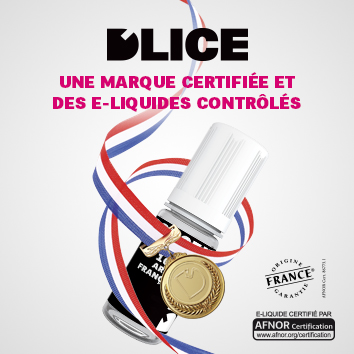Switching to rebuildables

Switching to rebuildables – Definitions
As you most certainly know, an electronic cigarette features a battery that heats a resistance. Inside this resistance you can find a wick soaked with e-liquid. The heat will vaporize the liquid which will then be inhaled..
A rebuildable atomizer will enable you to create or build yourself your own coil. In order to do so, you’ll need some tools (clamp, cissors, small screwdriver, etc.), some cotton especially adapted for vaping and a resisting coil. Contrary to a classical copper coil for example, the flow of the electrical current will bring the resisting coil, and its inner resistance to heat thanks to the Joule effect.
RTA & RDA
 There are two main rebuildable families: the RTA, which stands for Rebuildable Tank Atomizer, and the RDA which stands for Rebuildable Dripping Atomizer. The first one is equipped with a tank while the second one doesn’t have a tank. You’ll need to put a few drops of the liquid directly on the cotton wicks quite often, hence the name ‘dripper’, which is also used. Using a dripper will bring you more flavors or more vapor (depending on the conception) than a RTA.
There are two main rebuildable families: the RTA, which stands for Rebuildable Tank Atomizer, and the RDA which stands for Rebuildable Dripping Atomizer. The first one is equipped with a tank while the second one doesn’t have a tank. You’ll need to put a few drops of the liquid directly on the cotton wicks quite often, hence the name ‘dripper’, which is also used. Using a dripper will bring you more flavors or more vapor (depending on the conception) than a RTA.
You can also find some RTDA, which combine both features, namely they have similar properties than drippers but they also have a tank.
Switching to rebuildables – Ohm’s law

Ohm’s Law
Ohm’s law describes the basic relationship between the current (Amperes), the voltage (Volts) and the resistance (Ohms). The word resistance is here used as a measure of the difficulty to pass an electric current through that conductor. It is also used to describe the « resistance coil » objects that enable us to vape.
Here below is the law:

We already know the voltage: a 18650 or a 26650 battery used for e-cigarettes for example delivers a 3.7V rated voltage and a 4.2V when fully charged. We are missing the value of the resistance and we will then be able to calculate the current intensity.
The current intensity is quite important because it is limited on batteries and you should never exceed it. Most 18650 batteries, which are the most common ones in e-cigarettes, have a maximum current intensity of 30 to 35A.

Switching to rebuildables – Calculating the value of our resistance

If you want to explore the different options, here’s the detail of the categories:
- Wire diameter: quite simply the diameter of your resisting wire
- Coil diameter: inner diameter of your coil, namely the diameter of the rod or the screwdriver around which you’ll curl your resisting wire
- Setup: type of coil you’ll be working with (single coil, dual coil, etc.)
- Leg length: length of your resisting wire between your coil and the atomizer studs
Switching to rebuildables – Power equation
P=23W
Switching to rebuildables – The tools
To build your first coils, you will need:
-
an atomizer
-
an electro box or an ohmmeter
-
a small clamp
-
resisting coil (Kanthal, …)
-
vaping cotton
-
pair of cissors to cut the cotton
-
a screwdriver to be able to screw/unscrew your atomizer
-
a stem around which you’ll be able to wrap the wire
-
e-liquid
As far as the stem is concerned, it should be of the same diameter as the inner diemater of your coil. As an example, the little blue cross-headed screwdrivers that are supplied with vaping supplies have a 2mm-diameter and can be used for micro-coils.

Switching to rebuildables – Building your resistance
It is now time to start building your coil and wrap it around your screwdriver. To do so, cut a wire length that is long enough (around 10 centimeters) and start wrapping it while keeping a couple of centimeters on each side. It’s important to tighten the loops. Once your coil is finished, take the clamp and pull on each end of the wire so that the wire is tightened around the screwdriver.

 Place your coil at the planned spot on your atomizer and insert the coil in the post holes and tighten the post screws. Then, you can remove the screwdriver from the coil. If you are using a box or a mod, please make sure that it is switched off or that the battery has been taken away.
Place your coil at the planned spot on your atomizer and insert the coil in the post holes and tighten the post screws. Then, you can remove the screwdriver from the coil. If you are using a box or a mod, please make sure that it is switched off or that the battery has been taken away.
During each and every step, your coil should look like a resisting coil, but when you’ll be sending current through it, there might be some hot spots. However, it is really important that your coil should heat up from the center towards the outer edges. If it is already the case, screw your atomizer on your box and turn it on.
 Your box should give you the impedance (in ohms) of your resistance. If the result suits you, it’s perfect. Otherwise, there could be a short-circuit. In this case, make sure that your coil is not in contact with anything. Then check for hot spots that need to be eliminated. In order to do so, you’ll send some current with short pulses. Between two current pulses, use the clamp to move the coils closer to one another. This should improve the reddening.
Your box should give you the impedance (in ohms) of your resistance. If the result suits you, it’s perfect. Otherwise, there could be a short-circuit. In this case, make sure that your coil is not in contact with anything. Then check for hot spots that need to be eliminated. In order to do so, you’ll send some current with short pulses. Between two current pulses, use the clamp to move the coils closer to one another. This should improve the reddening.

The last step for a perfect coil is to lightly scratch the coil with a clamp or with a pair of cissors. Give it a try!
Switching to rebuildables – Final steps
 You’ll now have to insert the cotton. Cut a cotton piece and roll it without flattening it too much.
You’ll now have to insert the cotton. Cut a cotton piece and roll it without flattening it too much.
The diameter should be slightly superior to the resistance’s diameter. Insert it inside the coil by shaping the end in a spike.
Move it from left to right a few times just to make sure it doesn’t get stuck.

 Add e-liquid, close your atomizer and now it’s ready, you can enjoy tailor-made vaping!
Add e-liquid, close your atomizer and now it’s ready, you can enjoy tailor-made vaping!
* a clapton coil is a coil made of one or several resisting wires that are tightly wrapped into a second wire. Its name comes from guitar player Eric Clapton and its strong resemblance with a guitar string.






